Key takeaways:
- Understanding user needs and feedback is crucial for developing features that truly resonate with users, as demonstrated by the importance of testing and empathizing with their experiences.
- Prioritizing features effectively involves balancing user needs with business goals, focusing on user feedback, and considering the impact on the user experience and market trends.
- Measuring feature success requires looking beyond initial metrics, incorporating retention rates, and gathering qualitative feedback to understand user satisfaction and ongoing engagement.
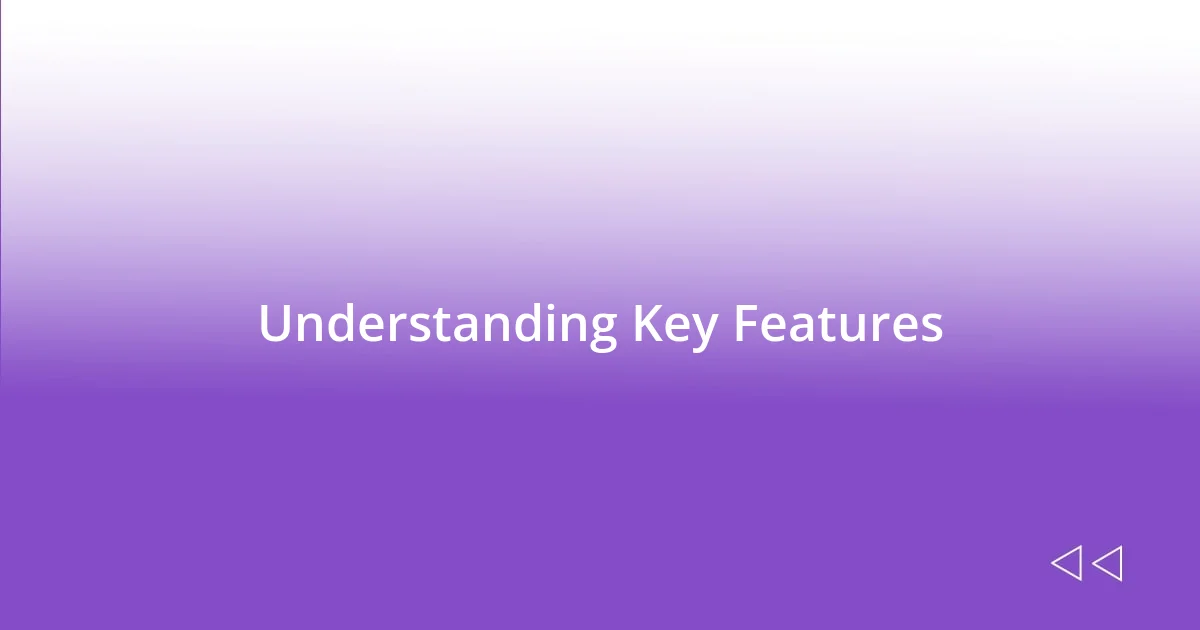
Understanding Key Features
Understanding key features is all about putting yourself in the user’s shoes. I remember the first time I tested a new app; I was overwhelmed by its numerous features. It wasn’t until I took the time to explore each one that I understood how they could really enhance my experience. Have you ever felt lost in the sea of options? It can be daunting, but taking that initial step to learn what each feature does is crucial.
One essential aspect I’ve often overlooked is how these features align with actual user needs. Not every capability resonates with every user. For instance, I once struggled with a software tool that had a brilliant reporting feature, but I found it unnecessary for my work routine. This taught me that understanding key features also means understanding which ones truly add value for you personally. How do you prioritize what’s important?
Also, it’s fascinating how features can evolve. With updates, I’ve seen tools transform drastically; the introduction of a single feature can change everything. I periodically reflect on a project where a simple collaboration feature helped streamline our process. It made me realize that keeping an eye on new developments can help you leverage updated features effectively. Isn’t it exciting to think about how the right feature can redefine your workflow?
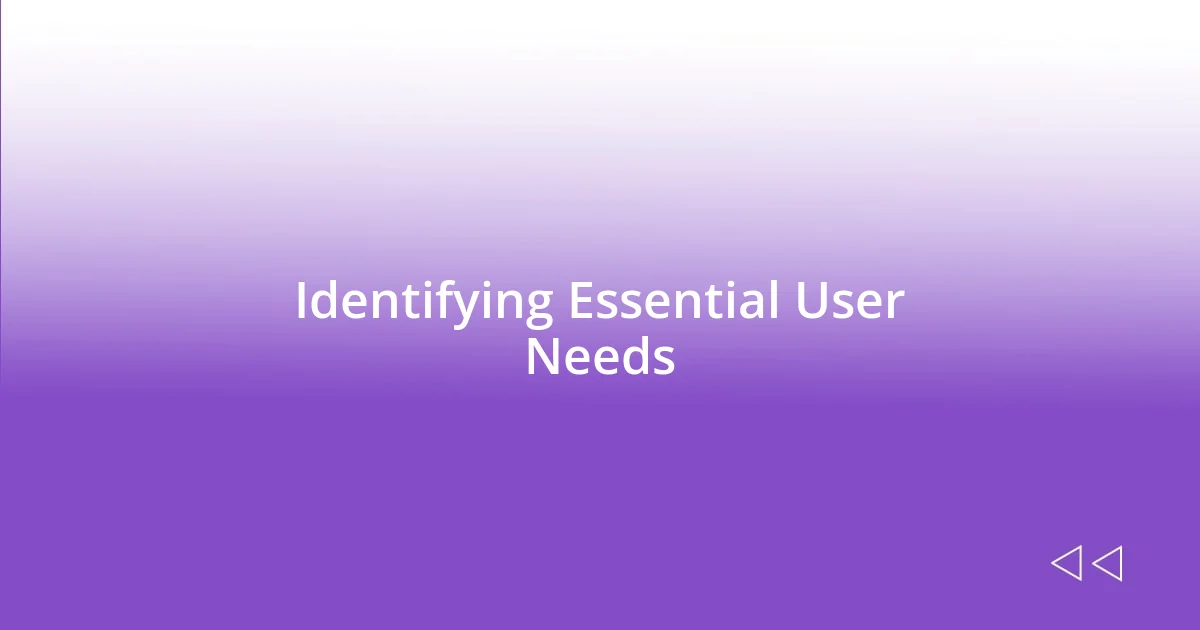
Identifying Essential User Needs
Identifying essential user needs involves listening closely to feedback. In my early days of product development, I remember gathering user input and jotting down their pain points during interviews. This practice not only revealed critical needs but sparked ideas for features that honestly resonated with users. Have you ever had an epiphany from someone sharing their experience? Sometimes, those moments reveal insights that transform the entire project.
When I recall a project where we overlooked certain user preferences, it makes me cringe. We assumed everyone wanted a flashy dashboard, but what users craved was simplicity. Running multiple iterations and testing prototypes helped us finally build an intuitive interface that users adored. This taught me that diving deep into user preferences is crucial to create features that genuinely matter.
To aid in this exploration, I find it helpful to categorize needs to understand them better. Below is a simple comparison table that illustrates different types of user needs—functional versus emotional. This distinction can guide the development of features that appeal not only to what users require but also to how they feel while using the product.
| User Needs Type | Description |
|---|---|
| Functional | These are practical needs that focus on what the product does. |
| Emotional | These needs reflect how the product makes the user feel. |
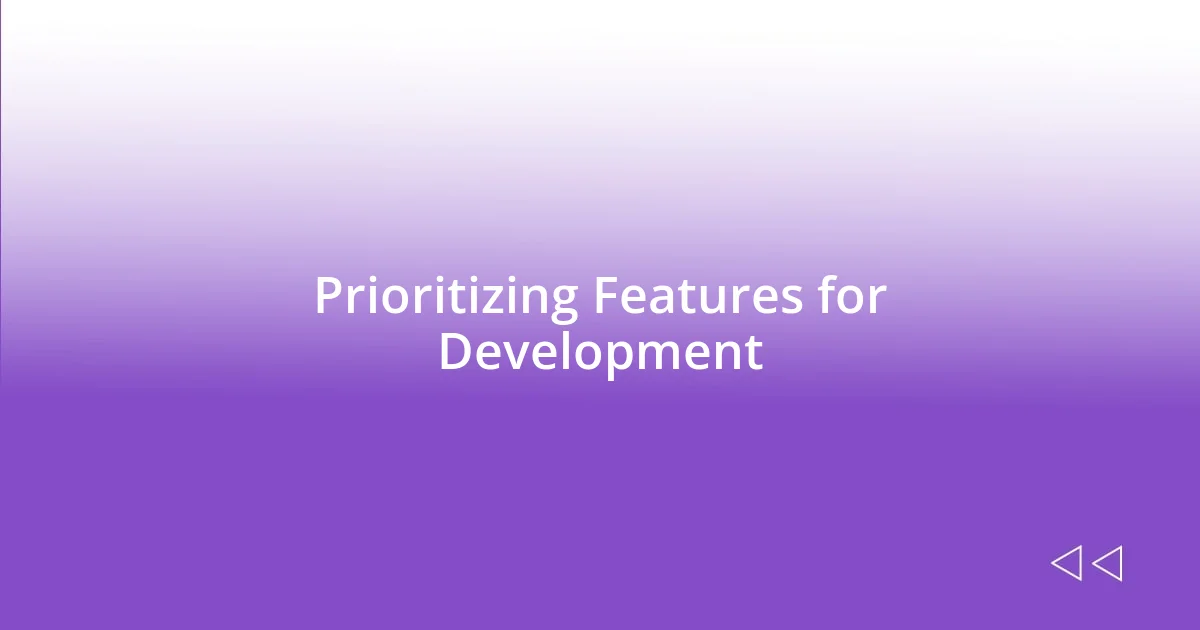
Prioritizing Features for Development
When it comes to prioritizing features for development, I’ve learned that it’s vital to balance user needs and business goals. In one of my earlier projects, I was part of a team that faced this dilemma head-on. We had a long list of potential features, but the team’s excitement often led us to overlook those that would truly impact the user experience. It was a wake-up call when we realized that focusing on the most requested features not only pleased our users but also drove engagement and retention.
To help streamline this process, here are a few criteria I often consider when prioritizing features:
- User Feedback: Direct insights from users can reveal what they genuinely want.
- Impact on User Experience: How will the feature enhance or simplify the user’s journey?
- Alignment with Business Objectives: Does this feature support our overall goals and vision?
- Development Effort: What resources will it require, and is it feasible within our timeline?
- Market Trends: Understanding the competitive landscape can help identify must-have features.
Through this structured approach, I’ve found it immensely rewarding to see how prioritizing thoughtfully can lead to a product that not only meets market demands but also enriches the user experience. Every time we launch a feature that users love, it feels like a small victory.

Testing Features with Real Users
Testing features with real users is an eye-opener in the development process. I remember the first time I conducted usability testing; it was almost nerve-wracking to watch users interact with our prototype. The genuine reactions—both positive and negative—helped me see our product through their eyes and illuminated aspects I had never considered. Don’t you think this kind of direct feedback can reshape our understanding?
I once made the mistake of assuming that a feature I loved would resonate with users. During a testing session, a participant struggled to navigate it, expressing frustration that resonated deeply with me. This experience taught me that stepping back and allowing users to explore freely can reveal invaluable insights that mere surveys often miss. It’s a humbling reminder that our own preferences can sometimes cloud our judgment about what truly works for our audience.
Engaging with real users during testing provides a rich tapestry of perspectives that we can’t replicate in a boardroom. For instance, after implementing a major change based on user feedback, I eagerly awaited the next round of testing. When users responded enthusiastically, it felt like pure validation, reinforcing the idea that user-centered design is the key to creating features that genuinely resonate. This kind of interaction can spark creativity and innovation, don’t you agree?
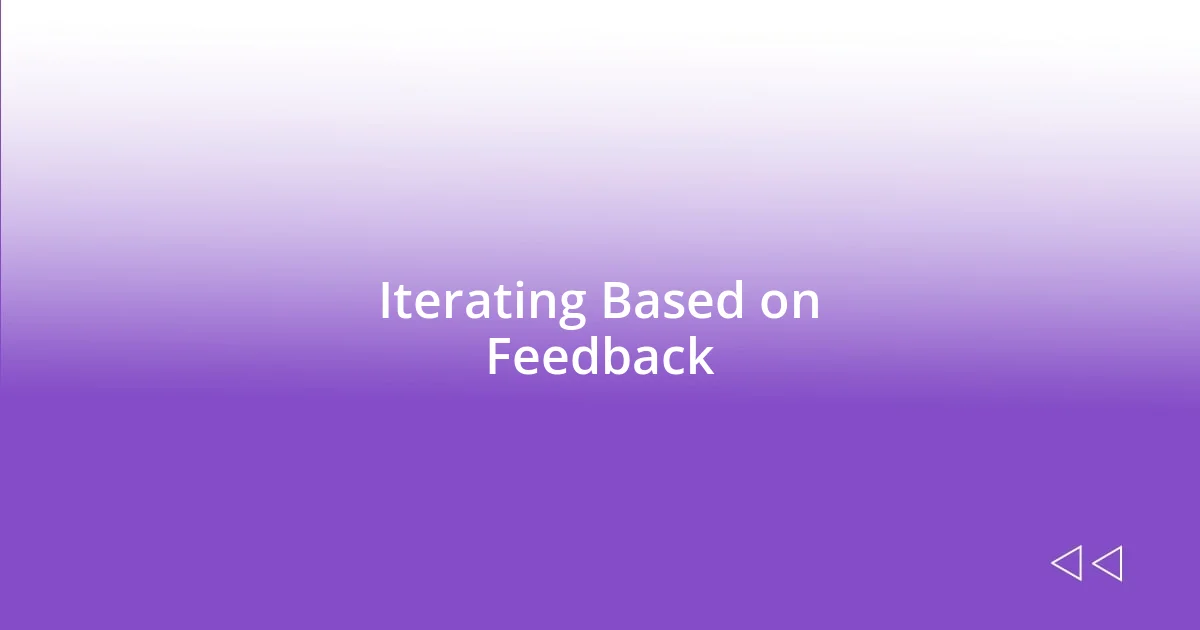
Iterating Based on Feedback
Iterating based on feedback is crucial in the development journey. I recall one project where we launched a feature that initially seemed brilliant. After gathering user feedback, I was surprised to find that many users were confused about how to access it. It was a real eye-opener; their frustration made me realize that what we thought was intuitive wasn’t perceived that way at all. How often do we mistakenly equate our internal logic with user understanding?
I’ve found that incorporating user feedback isn’t just about making tweaks; it’s about fostering a culture of continuous improvement. During a sprint review, we discussed users’ reactions to our recent updates. One team member suggested a small change based on their feedback, and I was skeptical at first. Yet, when we implemented it and saw a significant increase in user engagement, it was clear that even minor adjustments could lead to remarkable outcomes. Isn’t it fascinating how a small nudge in the right direction can make such a difference?
Listening to users and adapting our features accordingly can be daunting, yet also immensely rewarding. After a significant iteration, I had a user reach out to express their gratitude for the changes we had made based on their suggestions. This heartfelt acknowledgment deeply resonated with me—it highlighted not only the value of user feedback but also the impact we have on their experience. When we embrace feedback as a guiding tool, we’re not just developing products; we’re creating solutions that truly matter. Wouldn’t you agree that this approach transforms our work into something meaningful?
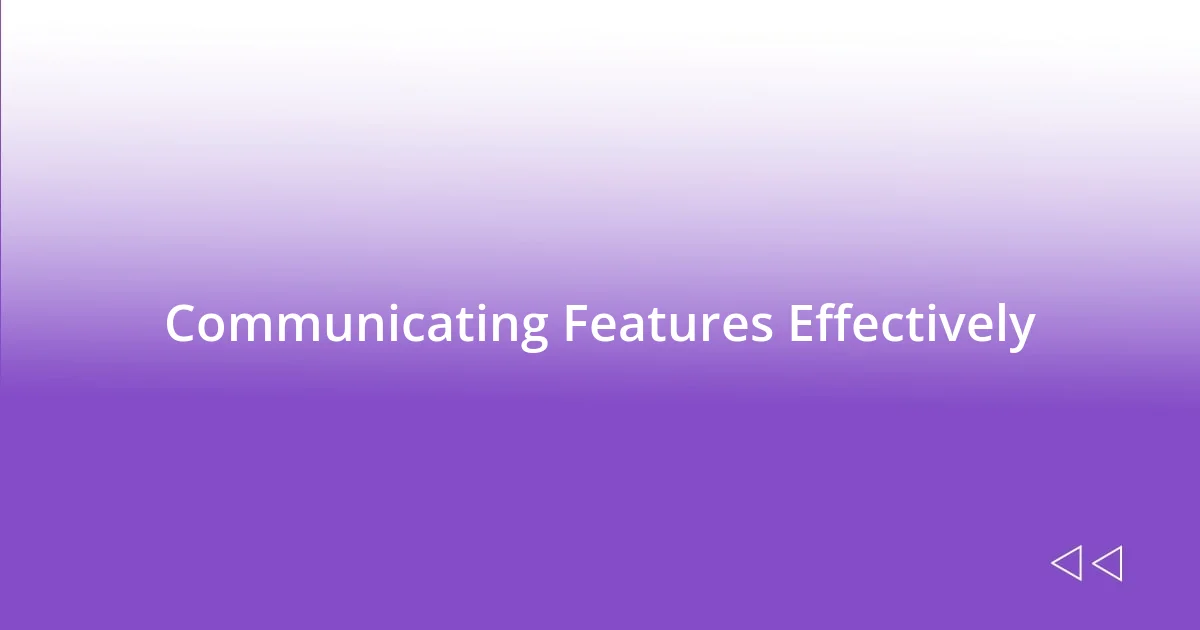
Communicating Features Effectively
Communicating features effectively goes beyond just outlining what a feature does; it’s about conveying its value to users in relatable terms. I remember launching a new feature in an app that I was genuinely excited about. I crafted a detailed email explaining the functionality, but when I reviewed the feedback, it was clear I had missed the mark. Users wanted to know how this feature would make their lives easier, not just how it worked. Isn’t it fascinating how we often assume users understand our intentions?
There’s something powerful about storytelling when communicating features. During a recent team meeting, I shared a user story that illustrated a specific challenge our audience faced. By linking the feature directly to the real problem it solves, the team’s perception shifted. Suddenly, it wasn’t just a feature; it became a part of the solution to make users’ lives smoother. Have you ever noticed how real-life applications resonate more deeply with your audience?
Visual aids can also enhance feature communication dramatically. I once created a simple infographic to show how a new feature would fit into a user’s daily workflow. Watching my colleagues engage with it sparked lively discussions about potential challenges and enhancements. This visual representation not only clarified our intentions but brought about a collaboration that felt invigorating. How do you think visuals can help bridge the gap between complex features and user understanding?
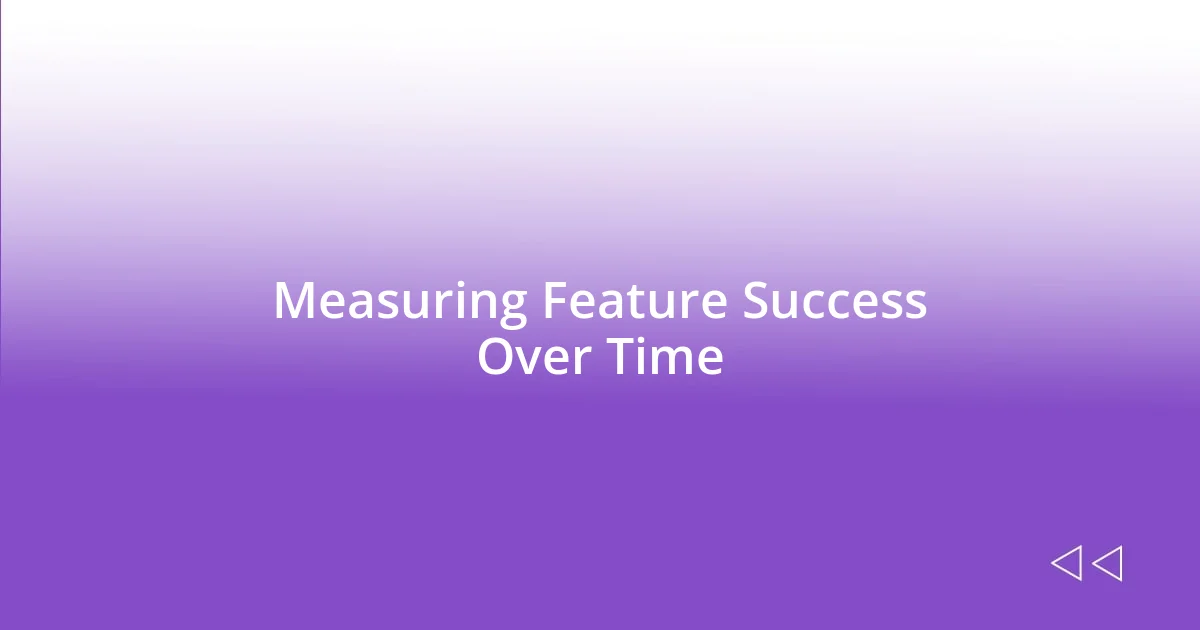
Measuring Feature Success Over Time
Measuring feature success over time is a nuanced endeavor that requires us to look beyond surface metrics. I recall launching a feature that saw great initial usage, but as the months progressed, I noticed a slow decline in engagement. It took me a while to connect the dots—some users loved the novelty, but it didn’t integrate into their routines as I had hoped. Have you ever experienced that moment when user behavior surprises you?
Reflecting on my experience, I’ve learned the importance of establishing metrics that truly reflect user satisfaction and value. One project taught me the power of setting up retention rates alongside usage statistics. When we analyzed the data closely, it became evident that while the feature drew users in, it was the ongoing interaction that mattered more. I couldn’t help but feel that these metrics, when viewed together, told a deeper story—one that guided our approach to future iterations and enhancements. How often do we think about not just attracting users but keeping them engaged?
Moreover, gathering qualitative feedback has proven invaluable in this measurement process. After developing a feature, I made it a habit to directly ask users how it impacted their workflows. Their responses often illuminated areas for improvement that numbers alone couldn’t convey. I remember one user telling me how a small adjustment made their task easier, and that shift in their daily routine brought me immense satisfaction. Isn’t it incredible how user insights can transform data into meaningful stories about success?














